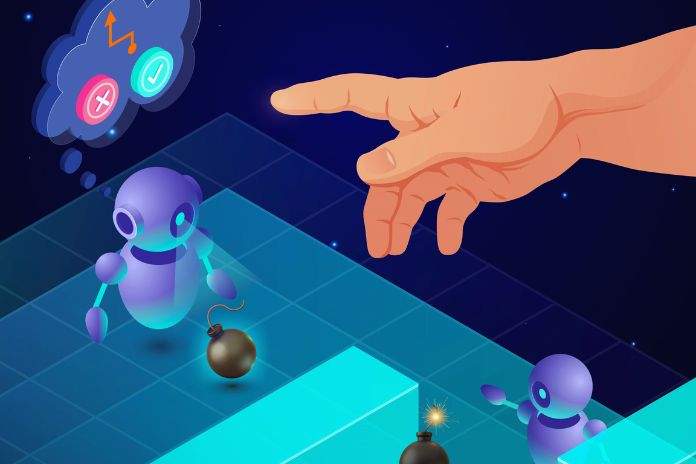It will not be a new generation of robots supporting man in many tasks, but the union of two technologies, mechatronics and cognitive vision. Collaborative robotics has been a reality for about ten years now and finds space in various applications ranging from loading machine tools to quality control, passing through end-of-line packaging. Ease of installation and rapid return on investment have been the primary growth factors of this technology in recent years, which is carving out an increasingly less marginal role in the broader robotics sector.
Collaborative Robotics, Market, History And Prospects
According to the Statistics Department of the International Federation of Robotics (IFR), collaborative robotics installations represent a constantly growing market share, from 2.8% in 2017 to 4.8% in 2019. This occurs mainly in new markets and for new applications and, to a minimal extent, taking away shares from more traditional robotics.
The first collaborative robotics installations were designed to relieve humans of exhausting, dangerous, or low-value-added tasks. From the simple manipulation of objects to the more recent use in welding, the main features used by these robots have undoubtedly been the ease of use, programming and reprogramming. Collaborativeness is perceived more in a new job’s installation and teaching phases. Indeed, insiders talk about coexistence rather than cooperation between man and robot .
But this replacement paradigm will be short-lived. In fact, according to research by McKinsey & Company , less than 5% of tasks can be fully automated, at least with current technology, while more than 40% can be at least 50% automated. It follows that we will have to expect, as the true collocation of collaborative robotics, the support of the person in tasks that can only be partially automated.
The Adoption Of Collaborative Robotics In Companies
Will it just be a matter of time? Will we simply have to wait for the time that usually elapses between the first installations of technology and its widespread diffusion? Or is it a question of technology? Probably both. Unsurprisingly, an analysis by Boston Consulting reveals that more than 90% of the companies interviewed cannot yet take full advantage of new-generation robotics .
However, one thing is sure: looking to the future means preparing to face the most complicated challenges, i.e. those applications (definitely more numerous, as we have already seen) in which man cannot be entirely replaced by automation but will have to necessarily make sure that the two natures, the human and the artificial, coexist and are functional to each other.
Also, this is most likely where examination and development endeavors should be concentrated. The robots are outfitted with refined strategies to ensure the well-being of the administrators, obviously, and the regulation constantly confirms the applications. Yet, well-being isn’t the main empowering factor but vital for the coordinated effort among people and robots.
Regarding collaboration, something more is expected beyond mere co-presence, sometimes occasionally. Collaborating, from the Late Latin collabōrare meaning to work together, is a relatively simple and natural activity for two people. Maybe it’s even between two robots. But between a man and a robot, the levels of effectiveness and reliability are still not satisfactory. How come? Combining two components so different from each other, which speak such different languages, is certainly not easy.
Communication Between Man And Robot
People don’t just communicate with each other with natural language; they do it in many different ways, not necessarily verbally. Gestures, body language, and expressiveness are all methods of communication that are easily interpreted by a person but difficult to understand by a machine.
First, we are talking about robots with minimal sensory capabilities. Often, they are not equipped with vision systems, except occasionally and certainly not to observe the “human colleague”. Observing and understanding, relating the elements that make up the scene in space and time, for example, the workspace, are activities we carry out naturally, without even realizing it. But how could a robot do it?
We have now refined the technologies for artificial vision, obtaining several megabytes (just think that the latest generation mobile phone has a camera of at least 12 megapixels) from a sensor of a few square centimeters. The resolution of the images is not the real problem, nor is the level of detail. To date, the weak point is the ability to distinguish and relate to each other the different elements that make up a scene or an image.
Cognitive vision, i.e. the set of techniques ranging from image analysis ( computer vision ) to artificial learning (machine learning), will probably constitute the keystone for the further development of collaborative robotics. Sensors, cameras, and sophisticated algorithms will allow robots to understand the context in which they operate and their “human colleagues” also use. They can relate more easily to humans and, therefore, be ready to intervene, supporting humans without completely replacing them in a few tasks.
Conclusions
Therefore, it will not be a new generation of robots that will finally support man in many tasks. It won’t even be a matter of time, the time needed to convince even the most skeptical. The union of two technologies, mechatronics and cognitive vision, will pave the way for increasingly complex applications requiring human and robotic components.
Read Also: Google Improves The Nearby Share Feature

